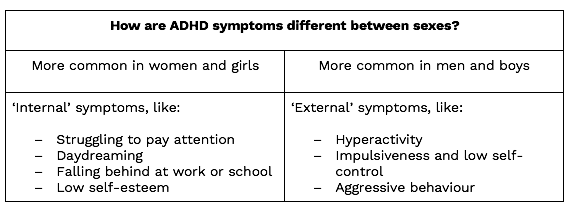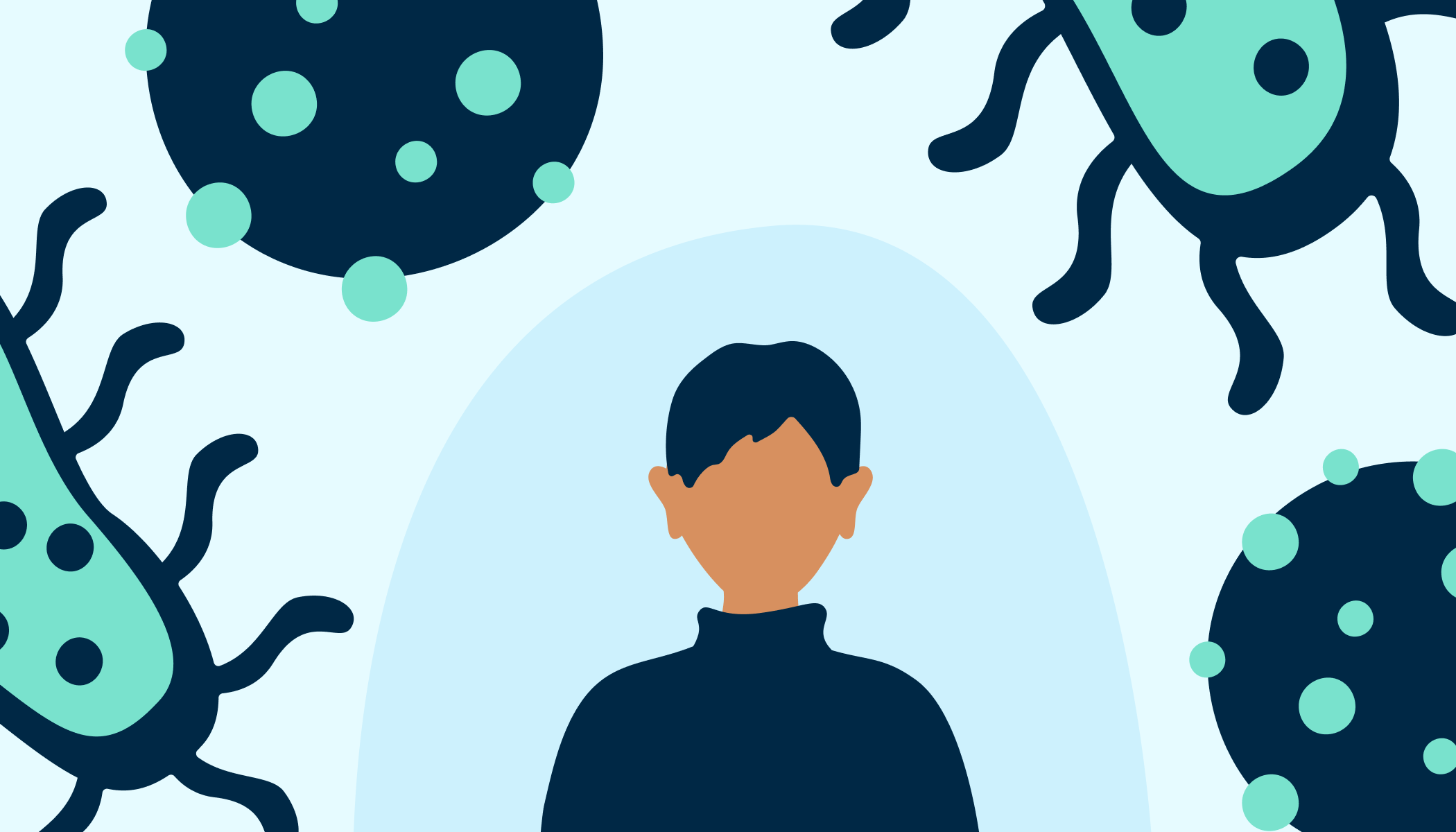Attention deficit hyperactivity disorder (ADHD) was previously thought to be up to 9 times more common in boys than girls. Recent research suggests that although more boys get an official diagnosis, it’s not necessarily less common in girls.
What is ADHD?
ADHD is a condition that affects how you behave and function. ‘It’s a neurodevelopmental condition, but it may be more helpful to think of it as a day-to-day challenge in functioning that starts in childhood,’ says Livi psychologist Jessica Almqvist.
ADHD is a spectrum disorder, which means it can cause mild to moderate symptoms. ‘It causes you to have trouble concentrating and focusing. Many people also have problems regulating energy levels – sometimes you have lots and sometimes too little.’
Are ADHD symptoms different for males and females?
A common perception is that people with ADHD are hyperactive and disruptive. These symptoms, which are easy to spot, happen to be more common in young boys with ADHD.
‘Women and girls experience ADHD differently, which may explain why they often don’t get a diagnosis until later – if at all,’ says Almqvist. ‘As research accumulates, we’re seeing that many more girls, ethnic minorities and adults of both sexes have ADHD than we’ve previously assumed.’
ADHD has a lot of similar symptoms for males and females, but there can also be some key differences.
Symptoms of ADHD fall into 3 categories:
- Attention – having trouble concentrating
- Activity levels – being hyperactive, like fidgeting or talking a lot
- Self-control – acting impulsively without considering the consequences
Women and girls often experience attention-related symptoms, like being distracted and withdrawn. Men and boys are more likely to be hyperactive and impulsive.

Why is ADHD missed in women and girls?
Women and girls tend to have more internalised symptoms, which are usually less disruptive than the typical symptoms in boys.
Women and girls may also develop coping mechanisms that allow them to mask their symptoms better than boys. ‘They often get diagnosed in their teens because that’s when it starts getting hard to cover up the symptoms,’ says Almqvist.
How does ADHD look and feel for girls?
The way ADHD symptoms appear on the outside and the way you feel inside might be different. Looking at both sides of the story can help us better understand the symptoms.
1. Problems concentrating
How it can look:
- Not listening or zoning out
- Being indecisive
- Shyness
- Starting things but not finishing them
How it can feel:
- Like your head is full of thoughts or noise
- Like some distractions are hard to tune out
- As if your social batteries are often drained
2. Challenges with energy levels
How it can look:
- Being unpredictable or chaotic
- Suddenly withdrawing
- Being restless or fidgety
How it can feel:
- Not having the right amount of energy at the right time
- Getting ‘hyper-fixated’ or engrossed in one thing for hours
- Having to hide being too energetic
- Burning out quickly
3. Being impulsive
How it can look:
- Risky behaviour
- Bingeing on food or alcohol
- Lack of self-control
How it can feel:
- Like boredom is unbearable
- Getting strong urges you can’t control
4. Low motivation
How it can look:
- Putting off chores or homework
- Not caring about certain things
- Only wanting to do ‘fun’ activities
How it can feel:
- Feeling stuck or overwhelmed when starting projects
- Worrying that you’re ‘lazy’
- Having sudden bursts of motivation to ‘fix’ everything
5. Social challenges
How it can look:
- Shyness or disinterest in friendships
- Being argumentative or easily frustrated
- Verbal or physical aggression
How it can feel:
- Like you’re different from others
- Often feeling ashamed, embarrassed or guilty
- Fearing rejection and trying to please people
- People getting frustrated with you or feeling let down by you
6. Cognitive skills
How it can look:
- Saying ‘I don’t know’ a lot
- Not remembering important plans or information
- Getting frustrated with difficult tasks
How it can feel:
- Getting overwhelmed by lots of information or steps
- Like you can’t trust your memory
- Falling behind even when you work hard
7. Anxiety or depression
How it can look:
- Becoming irritated or tearful easily
- Withdrawing and isolating
How it can feel:
- Feeling nervous or tense
- Getting headaches or a pounding heart
- Not being able to sleep or sleeping too much
- Like you don’t enjoy things any more
- A sense of hopelessness
‘From the outside, many ADHD symptoms could be confused with personality traits, as well as other conditions like anxiety,’ says Almqvist. ‘Ask yourself if it’s a recent problem or if you’ve struggled since childhood. How much has it affected your relationships, work or mental health?
‘If your friends or family tell you that you’re too forgetful or don’t listen, it can hurt – but it may be a sign to seek help,’ says Jessica. ‘Sometimes other people spot patterns that we fail to see ourselves.’
Why is it important to get an ADHD diagnosis?
‘It’s really important to get a diagnosis for ADHD – not just so you can access support and treatment but for practical reasons,’ emphasises Almqvist.
If ADHD isn’t diagnosed and treated properly, girls will be at risk of the same negative consequences as boys, like struggling at work or school. ‘A diagnosis can open the door to help in school or workplaces. It can take time to get a diagnosis, but it’s worth it.’
What should I do if I think I have ADHD?
Make an appointment to speak to a doctor if:
- You or your friends or family recognise the signs of ADHD in yourself
- You aren’t able to stick to routines even when you feel okay
- Your symptoms impact your daily life and you’re struggling to cope
A doctor can help figure out what’s causing your symptoms. They might refer you to a specialist for testing or give you practical advice to help you cope.
This article has been medically reviewed by Jessica Almqvist, licensed psychologist at Livi.


